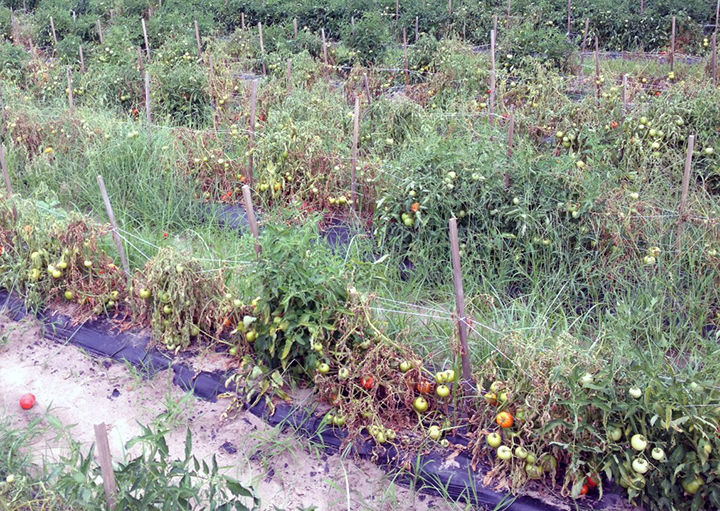“All three fungicides are safe to use and more environmentally friendly than many of their competitors,” said Keinath, noting his study did not find an increase in yields after fungicides had been applied to vegetable crops.
“But we did find a decrease in the number of diseased plants,” Keinath said.
“Tomatoes are usually planted 24 inches apart, which really is not that much space for a mature plant. It became apparent that when a plant died, its neighbors benefitted from a larger share of fertilizer, water and sunlight, and the survivors ended up producing a few more tomatoes than they otherwise would have. For large commercial growers, any risk of significant loss is a reason to use the fungicides as protection. But it’s possible that one of my recommendations for smaller growers might ironically turn out to be that they should not treat for Southern blight, because they might not be able to increase yield enough to recoup the cost of the fungicide.”
Keinath’s recommendations come after three years of research. He originally was approached by some large tomato growers in South Carolina who were having problems with Southern blight. Keinath’s research was funded in 2014 by two of those growers and in 2015-2016 by a S.C. Department of Agriculture Specialty Crop Block Grant.
“What I’ve determined is that Priaxor applied twice per season after planting is the most effective fungicide against Southern blight on tomatoes,” he said. “Cabrio and Fontelis also are effective, but not to the same degree as Priaxor. I also tested a biological fungicide and found it was not effective.”
Southern blight is caused by a soil-borne fungus called Athelia rolfsii, which is nearly impossible to eradicate even though it exists in relatively low levels. The fungus infects the lower stem of the plant near the surface of the soil. It is called Southern blight because it cannot survive for long stretches in frozen soil and therefore only thrives in warm climates. In the United States, Southern blight is found in the southeastern and other southern portions of the country, including Florida, Texas and large swaths of California.
Fungicides Keinath tested are designed to be sprayed on the lower stems of the plants, halting the ability of the fungus to sprout from the soil and attach branching filaments to the stems. This prevents the fungus from girdling and/or encircling the stem, which eventually kills the entire plant.
In South Carolina, there are more than 3,000 planted acres of tomatoes with an economic impact of about $44 million. Other widely planted crops that could be damaged by Southern blight include peppers, eggplants and green beans.
Photo above: Southern blight is caused by a soil-borne fungus called Athelia rolfsii, which is nearly impossible to eradicate even though it exists in relatively low levels. Photo: Clemson University
Denise Attaway, Clemson University
Source: Clemson University

















